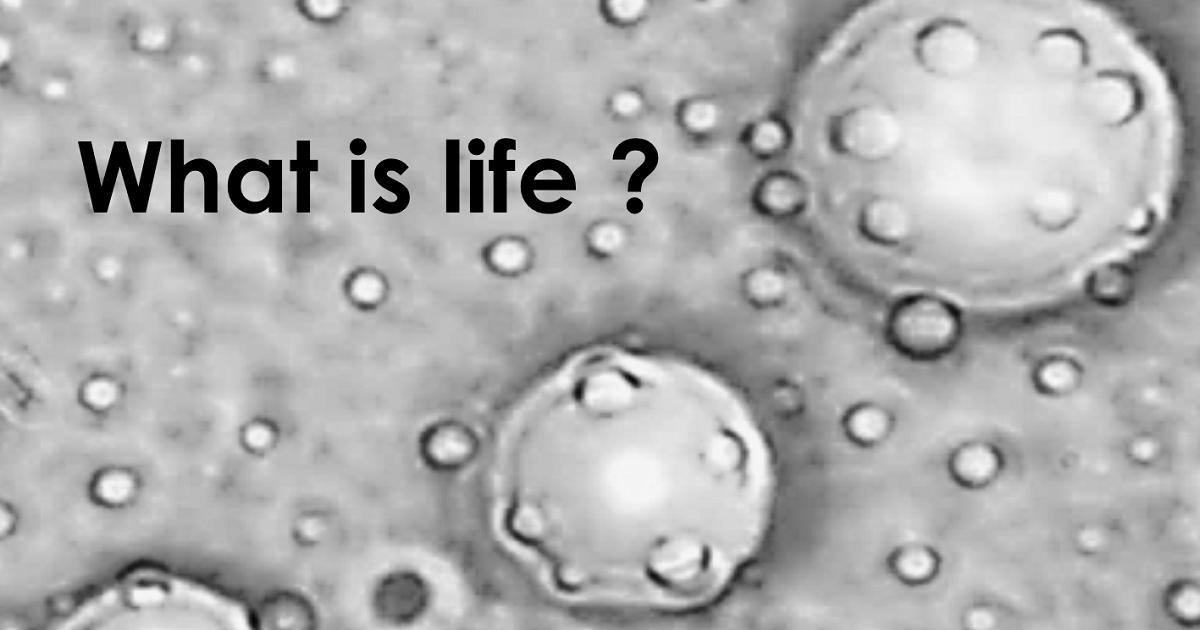What Is Life?
A special issue of Life (ISSN 2075-1729). This special issue belongs to the section "Biochemistry, Biophysics and Computational Biology".
Deadline for manuscript submissions: closed (31 March 2025) | Viewed by 38701

Special Issue Editors
Interests: virus-host interactions; lipid rafts; gangliosides; virus receptors; RNA viruses; SARS-CoV-2 variants; antivirals; vaccines
Special Issues, Collections and Topics in MDPI journals
Interests: astrobiology; chirality; prebiotics; organic chemistry; evolution; synthetic organic chemistry; meteorites; organic synthesis; chromatography; mars
Special Issues, Collections and Topics in MDPI journals
Special Issue Information
Dear Colleagues,
In 1944, Erwin Schrödinger published his seminal book “What is life?” which inspired generations of biologists. Despite amazing discoveries in biology (the DNA double helix, the genetic code, whole genomes sequencing, the structure of proteins, epigenetics...) we still struggle to define exactly what life is. The 80th anniversary of Schrödinger's essay seems to us the ideal time to ask the question again, in light of today’s knowlege. In this Special Issue we want to focus on selected parameters of biology that are often neglected, such as water, time, electrostatic potential or quantum mechanisms. These parameters control many (and often unsuspected) biological mechanisms and they are intimately linked to life processes and life definition. This Special Issue plans to give an overview of the most recent advances in this research field as well as new considerations in the definition of life. This Special Issue is aimed at providing selected contributions on the basic but neglected parameters of biology that are critical for better understanding what life is, and how it handles order and chaos through a combination of genetic and epigenetic mechanisms. Potential topics include, but are not limited to: The definition of life The role of water in biological mechanisms; How living organisms handle time constraints; Electrostatic potential in biology; Quantum mechanisms in biology; Impact of silent mutations in evolution; Intrinsically disordered proteins, moonlighting proteins and their roles in biology; New insights in the origin of life - astrobiology; Synthetic biology; Are viruses alive?
Prof. Dr. Jacques Fantini
Dr. André Brack
Guest Editors
Manuscript Submission Information
Manuscripts should be submitted online at www.mdpi.com by registering and logging in to this website. Once you are registered, click here to go to the submission form. Manuscripts can be submitted until the deadline. All submissions that pass pre-check are peer-reviewed. Accepted papers will be published continuously in the journal (as soon as accepted) and will be listed together on the special issue website. Research articles, review articles as well as short communications are invited. For planned papers, a title and short abstract (about 250 words) can be sent to the Editorial Office for assessment.
Submitted manuscripts should not have been published previously, nor be under consideration for publication elsewhere (except conference proceedings papers). All manuscripts are thoroughly refereed through a single-blind peer-review process. A guide for authors and other relevant information for submission of manuscripts is available on the Instructions for Authors page. Life is an international peer-reviewed open access monthly journal published by MDPI.
Please visit the Instructions for Authors page before submitting a manuscript. The Article Processing Charge (APC) for publication in this open access journal is 2600 CHF (Swiss Francs). Submitted papers should be well formatted and use good English. Authors may use MDPI's English editing service prior to publication or during author revisions.
Keywords
- definition of life
- origins of life
- synthetic biology
- theoretical biology
- quantum biology
- water, time
- electrostatic potential
- DNA
- mutations
- molecular interactions
Benefits of Publishing in a Special Issue
- Ease of navigation: Grouping papers by topic helps scholars navigate broad scope journals more efficiently.
- Greater discoverability: Special Issues support the reach and impact of scientific research. Articles in Special Issues are more discoverable and cited more frequently.
- Expansion of research network: Special Issues facilitate connections among authors, fostering scientific collaborations.
- External promotion: Articles in Special Issues are often promoted through the journal's social media, increasing their visibility.
- Reprint: MDPI Books provides the opportunity to republish successful Special Issues in book format, both online and in print.
Further information on MDPI's Special Issue policies can be found here.







